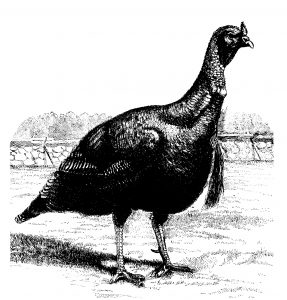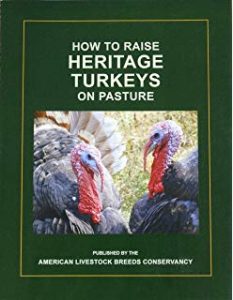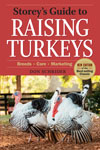
Breed Facts
Status:
Threatened
Use:
Meat
Egg Color:
Pale cream to medium brown with spotting
Egg Size:
Large
Market:
Male Young 17 lbs. Mature – 21 lbs.
Female Young 10 lbs. Mature – 17 lbs.
Temperament:
Variable from docile to aggressive, but generally good natured.
Note:
Be sure to buy your Beltsville Small White turkeys from a reputable source; some breeders sell Midget Whites as Beltsville Small Whites.
BELTSVILLE SMALL WHITE TURKEY
The Beltsville Small White turkey was developed to fill a clearly identified consumer need. In the early 1930s, most turkeys raised in the United States had dark-colored plumage, were medium-to-large in size, and had a narrow breast without substantial meat.
A 1936 survey found that 87% of home consumers wanted a “New York-dressed” bird (blood and feathers removed) weighing between 8-15 pounds. They also wanted a bird that was meaty, well-finished, and free from dark pin feathers.
The US Department of Agriculture research center at Beltsville, Maryland, undertook a breeding program to create a bird that would meet the consumer;s desire for the ideal bird. It must fit into apartment-sized refrigerators and small ovens while feeding small families. Between 1934 and 1941, researchers developed the Beltsville Small White variety from a genetic foundation that included White Holland, White Austrian, Narragansett, Bronze, and Eastern wild turkeys.
The Beltsville came into use in the 1940s, and the variety was recognized by the American Poultry Association Standard of Perfection in 1951. Their popularity peaked in the mid-1950s. The Beltsville Small White also contributed to the development of other strains of medium and small white turkeys.
The Beltsville Small White turkey’s success was short-lived and the variety was nearly extinct by the 1970s. While considered a good bird for families, it was less popular with the hotel and restaurant industry. Retailers preferred larger birds to obtain more “slices.”
The Broad-Breasted White (or Large White) turkey eventually overshadowed the Beltsville. The Broad-Breasted bird could fulfill market demand for both smaller and larger table birds by changing the age of harvest. By 1965, the Broad-Breasted White had nearly taken over the turkey market.
Still, the Beltsville Small White retains key advantages. Beltsvilles have good reproductive qualities, including the ability to mate naturally. They can be selected, bred, and maintained by small-scale producers. In contrast, Broad-Breasted White turkeys generally required artificial insemination for reproduction.
Young Beltsville turkey toms weigh 17 lbs and young hens weigh 10 lbs. Mature toms weigh 21 lbs and mature hens weigh 17 lbs. The plumage is white, with the head red to bluish-white. The beard is black, the beak is horn colored, and the eyes are dark brown. Shanks and toes are pinkish white.
Turkeys can be larger and a bit grumpier than ducks and chickens. The Beltsville is a more docile variety with an outgoing personality. It is a manageable size and pleasant nature make it a good variety for small farms.
Beltsville Small Whites are still relatively rare, but the population is growing, thanks to families seeking smaller birds for the table. A handful of hatcheries now offer them, paving the way for the development of larger flocks.
Did you know:
Did you know Milking Devon cattle have been in America for more than 400 years? They arrived with the Pilgrims in 1623, swimming ashore at Plymouth, Massachusetts. Learn more about this critically endangered breed at Milking Devon Cattle – The Livestock Conservancy

Breed Facts
Status:
Threatened
Use:
Meat
Egg Color:
Pale cream to medium brown with spotting
Egg Size:
Large
Market Weight:
10 – 17 lbs
Temperament:
Variable from docile to aggressive
You may be interested in…




